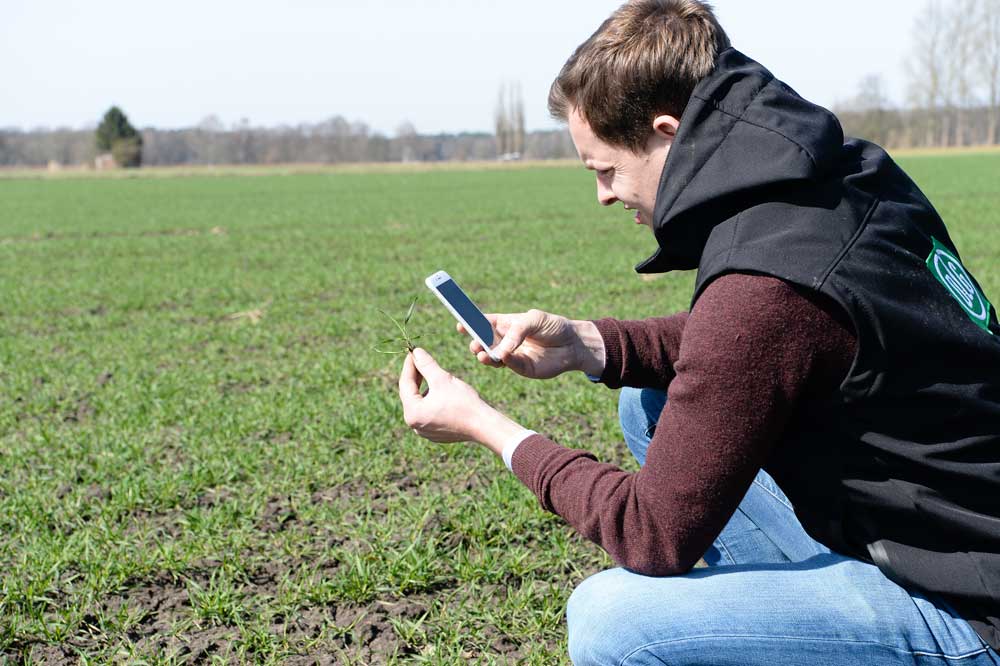Bridging Digitization between Europe and Asia and the Pacific
By DLG
The 2018th AGRITECHNICA ASIA in Bangkok developed to an irresistible platform not only for showcasing newest technical innovations but for exchange and even development of new knowledge. The supporting program included the AgriFuture Forum which in the three days of its presence during the trade fair hosted a number of keynote speeches, presentations and panel discussions. It was all about insights and results into Southeast Asian and the Pacific.
A most relevant panel met at the first day investigating the assumed differences in agriculture digitization between Europe and Southeast Asian and the Pacific. Herein, DDG Dr. Kloos, German Federal Ministry for Food and Agriculture, highlighted the efforts of the German government to channel aims and expertise in this subject to build up a sustainable groundwork for a determined development in German farming 4.0. In the discussion with Khalili Rosly, CEO and Co-Founder of MKR Hartamas, Malaysia, it became clear that also Asian countries struggle with topics like data sovereignty and interfaces between different systems. Answering the question if digital tools really pay out and lead to an objective improvement, Andree-Georg Girg, Commercial Operations Digital Farming, BASF, qualified this most common doubt. Girg postulated that a single tool cannot solve future process integrated problems. Rather, digitization can help to understand production systems, looking deeper into the interaction between soil-plant-atmosphere, and therefore supports reasonable decision making in practical farming.
Digitization as a tool for decision making
René Döbelt, DLG vice president and farmer in Germany has sound knowledge about the actual adoption of digital tools in German crop production. Therefore, the use of innovative tools – if digital or analog – is strongly considered by the farmer investigating. There is hardly a playing around with smart tools but a substantial assessment of expected benefits. Only proofed technology will make it into the daily processes of farmers. In Döbelts production of organic vegetables he uses high-presicion RTK-GPS to operate mechanical weeding without damaging the crop. For an improved revision of management decisions an elaborated farm management system is also introduced.
Next step: drone technology
For the moment, in Germany it is unthinkable to use drones for pesticide application. To high are safety and environmental legislation as to use this highly drift prone technology. In Asia this technology is well accepted. There is also not yet a fully networked farm in Germany where all processes are interlinked. The GPS technology is the one tool which is widely used in crop production as it is easy to use and benefits are well recognizable: less overlapping, precise application, higher user comfort,… It is a tool independent of broad band networks or cloud systems. Though, it works in rural areas as good as close to urban regions. Temporal signal lost can be bridged by new optimization systems. So GPS-systems in crop production is a reliable tool and basis for a number of other applications in digital farming.
Digitazation is no question of farm size
Questions from the audience of the panel discussion arose addressing the question of whether modern digital tools are mainly focused on bigger farm sizes rather than the most common smallholder farms in many regions of the world. It is well known that most investments in up-to-date technology are made by mid-size or big-size farms. The panelists discussed this aspect highlighting the fact that not every single farmer has to invest in a fully independent system. Digital tools enable a close collaboration of a number of farmers. Investigating as a cooperation or on village level, modern tools can be used by a number of farmers sharing costs and benefits. So one improved tractor based spraying system may substitute several hand-driven and highly health-risky sprayers in a village.
Sharing costs of machines and technology
Machinery-Rings may be another possibility to share costs of new technology and benefitting from the technological development. Machinery-Rings were invented in Germany in the 1960s when as well small German farms could not afford modern technology. Therefore, an organization has been founded organizing and managing the renting of machinery between farmers. This organization has knowledge about which farmer has machinery to rent and offers this information to interested farmers. By renting machinery farmers could fund the investigation and other farmers benefit from the use of modern technology.
Another question of the audience during the panel discussion was the combination of digital tools and the growing of genetically modified organisms (GMO) crops and if there is a special strategy regarding those crops and technology. Dr. Kloos indicated that the introduction of GMOs in Germany is no option as German farmers have no permission to grow those crops. However, Mr. Girg and Khalili Rosly considered that for technology it does not matter which kind of crop is grown. The aim of digital tools is to understand and optimize crop management. The use of resources as well as maintaining the crop yield and quality can be supported by digital tools no matter if the managed crop is GMO or not.
Digitisation is a tool, not the solution
All panelists agreed, however, that the use of modern technology cannot be its end in itself. The use of smart technology hast to follow a defined aim or problem which has to be solved. This, in turn, has to be gathered and decided by the responsible farmer. Coming to decisions, understanding processes and figuring out starting-points is based on a sound education of a farmer. Using all agronomical skills to improve systems is a step where digital tools may support but hardly be the final solution.




